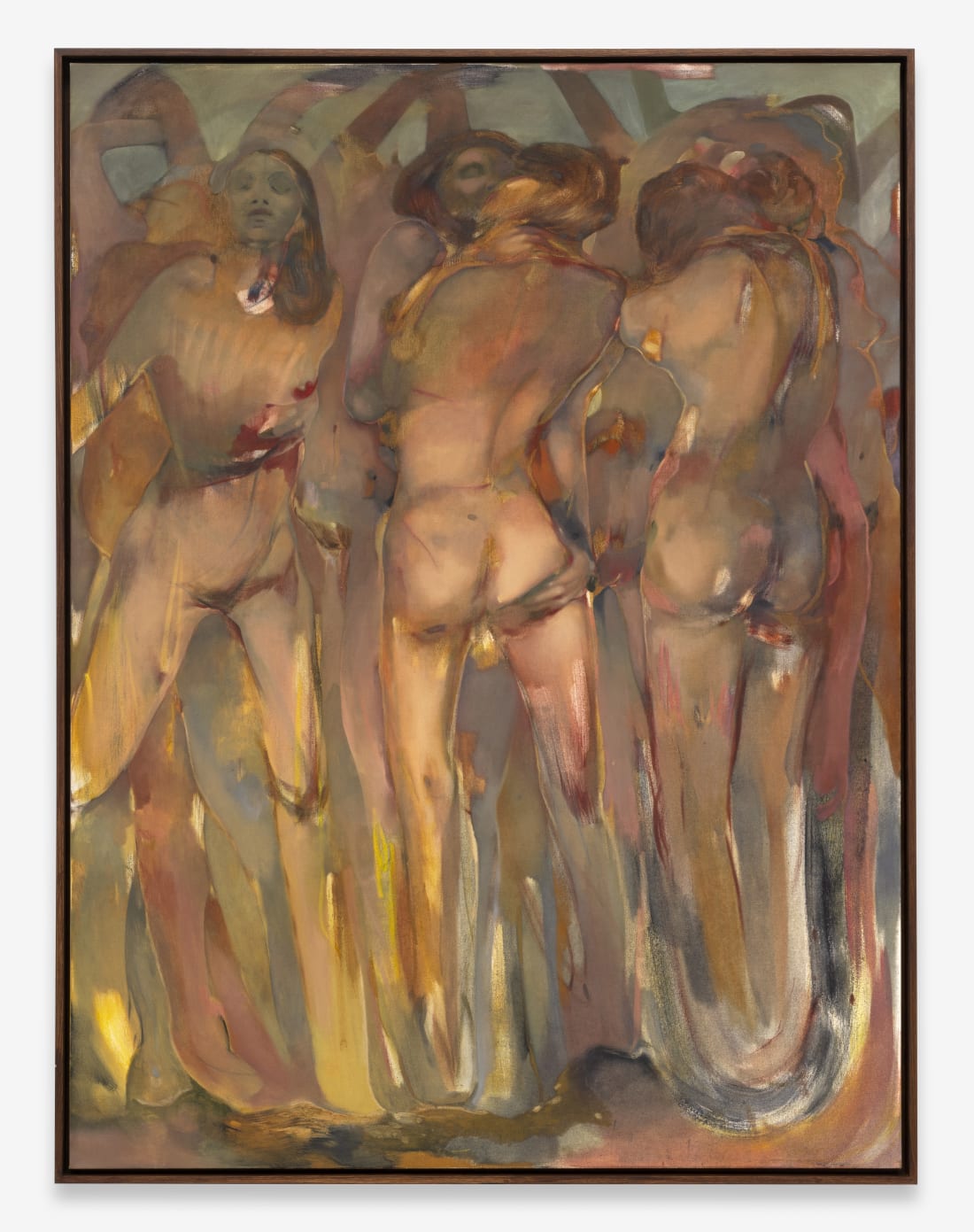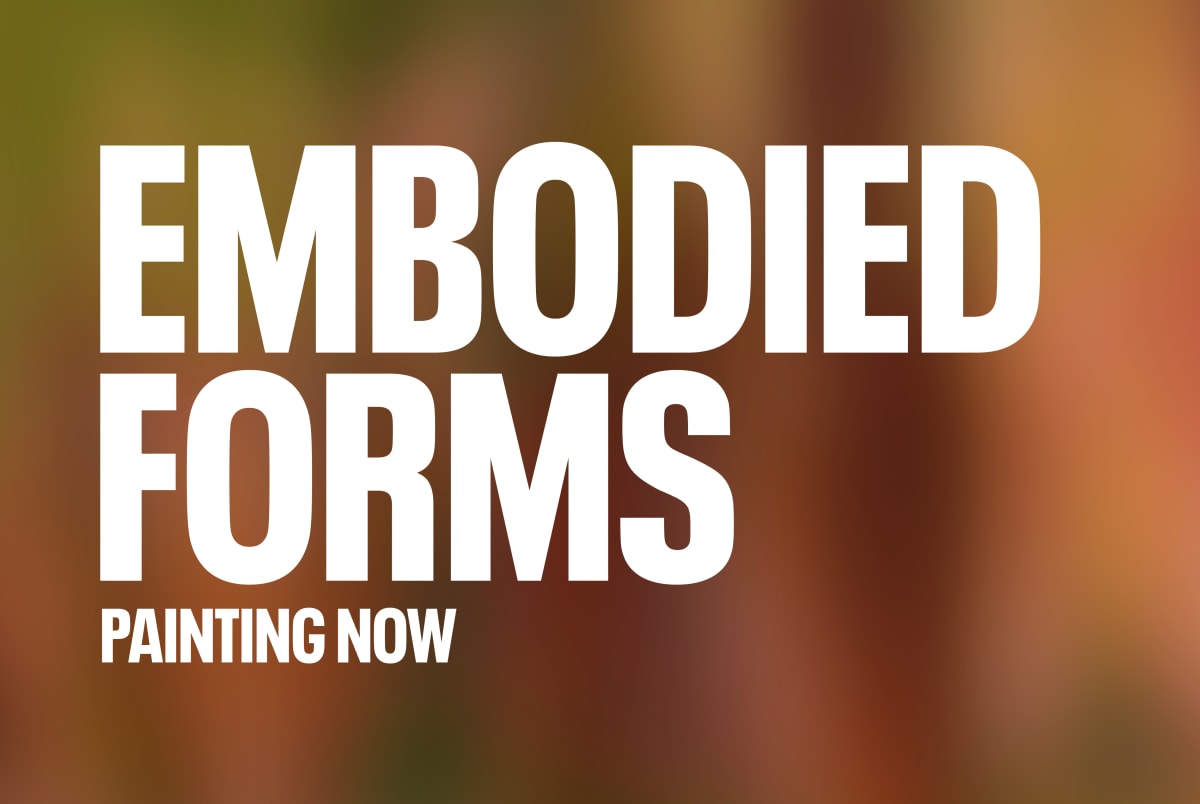

伊娃·海伦·帕德
Overview
"通过具象绘画,我创造了模糊的线条与空白,使其成为那些难以言喻之物的语言。这正是我如此羡慕抽象的原因,它本就在一个无法用语言描述的领域中运作。"
伊娃·海伦·帕德以艺术史为创作基点,尤其受到爱德华·蒙克(Edvard Munch)、詹姆斯·恩索尔(James Ensor)和奥托·迪克斯(Otto Dix)作品的启发。她的构图呈现出梦幻般的开放叙事,并融入神话元素。帕德将自己的作品描述为“对绘画中更具形而上意味的部分的臣服”,她的创作跨越了具象的边界,趋向于超验。作为艺术家创作核心意象的女性身体,常常展现出一种充满力量的能动性。
帕德笔下的人物仿佛画布上的“坐标”,他们逐渐从层层颜料中显现出来,或成群聚集,或独立于这些群像中。艺术家对他们进行冥想般的个体刻画,画中人物面容坚毅地注视着观者,从流动的构图中浮现,或融入深沉、宝石色调的笔触中。成对交缠的人物占据了不确定的空间,往往既没有表情,也没有具体特征,或完全被覆盖,情感则通过人物姿态或扭曲的肢体中涌现。她刻画的人物肢体时而相连时而重叠,边缘模糊而共鸣,一些棉质画布裸露在外,带来无限的诠释可能。她的形象超越了身体自身的界限,开启了她所谓的“允许建立共同联系的空间,那里藏着牺牲、梦想与希望”。
Art history stands as a point of departure for Danish-born, Paris-based artist Eva Helene Pade. Her paintings draw upon a lineage of Northern European figurative artists, including Edvard Munch, James Ensor and Otto Dix in her investigation of the complexities of human relationships.
In her compositions, dreamlike, open-ended narratives are fused with a sense of the mythological. Described by Pade as a ‘surrender to the more metaphysical parts of the paintings,’ her work pushes beyond the figurative towards the transcendental as she proposes a new painterly approach to depicting female embodiment today.
Represented as a site of empowered agency, the female body is central to her practice. Starting as ‘coordinates’ on the canvas, her figures emerge from layer upon layer of paint into clusters and crowds, or are singled out from these configurations in meditative depictions of individuals. Their faces stare out defiantly from the canvases, materialising from fluid compositions or dissolving into rich, jewel-toned strokes of paint. Full-length, interlocking figures dominate indeterminate sites, often appearing not only expressionless but featureless or entirely covered – emotion conveyed through their stance or contortion. Limbs connect or multiply with resonating blurred edges and areas of the cotton canvas are left exposed, inviting myriad readings. These forms extend a sense of the self beyond the body and open up spaces with which she ‘allows for the connections we all have. Where you have the sacrifice, dreams and hopes.’
Eva Helene Pade received her BFA and MFA from The Danish Royal Academy of Fine Arts in Copenhagen in 2024. Early recognition for her work includes the prestigious Young Talent Prize from the Carlsberg Foundation in 2017. Since then, she has exhibited her work both in solo and group shows across Europe and the United States, and has participated in significant curatorial projects including Uno, Nessuno, Centomila at Palazzo Capris, Turin (2021) and Forårsudstillingen at Kunsthal Charlottenborg, Copenhagen (2021). In April 2025 ARKEN Museum [of Contemporary Art], Ishøj, Denmark, will stage the artist’s first institutional solo exhibition, curated by Rasmus Stenbakken.
作品
Videos

出版









































































































































































































